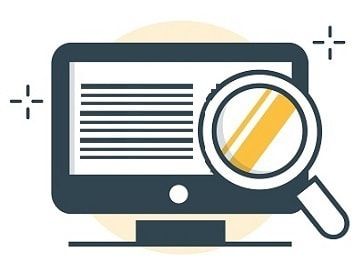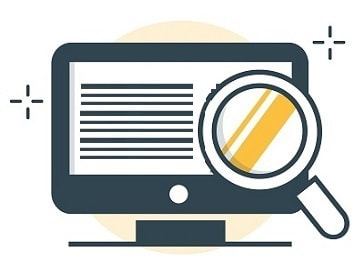Redundancy Insurance - The Definitive New Zealand Guide
Redundancy insurance is a type of insurance add-on (or standalone policy) that provides short-term financial assistance for those whose jobs are involuntarily lost due to redundancy. Some (but not all) redundancy insurance policies can also help those who are self-employed if their business becomes goes into administration or bankrupt.
Updated 24 June 2024
Summary
Summary
- Fewer insurance companies now offer redundancy cover. Right now, Chubb and AIA continue to offer redundancy insurance as an optional add-on to Income Protection Insurance. All benefits last for a maximum of six months.
- Before selecting any policy, make sure you read the terms and conditions, exceptions, and exclusions of your policy before you buy it. With redundancy insurance, there is no room for misunderstandings as any time out of is stressful enough without insurance claim problems - our guide outlines what you need to know.
What Is Redundancy Insurance?
Redundancy insurance will replace a percentage of your income for a specified period. The typical benefit period during which income replacement is provided is usually around three to six months (the exact duration of the benefit period can vary depending on the policy/add-on you purchase). In most cases, redundancy insurance does not cover voluntary redundancy - for example, if you choose to resign from your current position.
Know This: Redundancy Insurance is, in most cases, only available as an optional Income Protection Insurance or Mortgage Protection Insurance add-on benefit.
Our guide covers:
Know This First: Job Seeker Allowance and the Costs of Living
Know This: Redundancy Insurance is, in most cases, only available as an optional Income Protection Insurance or Mortgage Protection Insurance add-on benefit.
Our guide covers:
- Redundancy Insurance Policy Features and Terms
- What Does Redundancy Insurance Cover?
- Compare Redundancy Insurance Policies
- Pros, Cons and Exclusions Of Redundancy Insurance and Must-Know Facts
- Frequently Asked Questions
Know This First: Job Seeker Allowance and the Costs of Living
- Jobseeker Support is a type of main benefit available from Work and Income for people who would otherwise be working but who don’t have a full-time job at the moment. This includes people who have been made redundant. Essentially, Jobseeker Support is for anyone who is now available for work.
- You can only qualify for Jobseeker Support if you do not have a working partner. If your partner is working, you are not able to apply for Jobseeker Support. MoneyHub receives countless complaints about this limitation given many couples run their finances separately which creates problems when one person is out of work.
- Adding to this, the costs of living continue to climb to record levels and for this reason, many individuals and families will be in financial difficulties if they are made redundant. Mortgages, rent and food are more onerous than ever and many people struggle to manage when losing their primary income.
- However, redundancy insurance is only one option - this guide outlines everything you need to know to help you make an informed choice specific to your situation.
Redundancy Insurance in a Nutshell - Our View:
- Redundancy Insurance is offered by a limited number of insurers and is an add-on to an existing mortgage protection/repayment insurance or income protection insurance policy.
- Policy costs vary between insurers - comparing is the best way to get the best deal. However, it's difficult to get online quotes given the inherent risks in pricing redundancy insurance, so you will need to either visit an insurance broker or talk to insurers directly.
- Quotes usually include two fees; the premium fee (i.e. the cost of the insurance) and a policy fee (a fee charged by the insurer to administrate your policy). Make sure the quote you receive includes both of these fees.
- Redundancy insurance policies have plenty of exclusions - make sure you aware of these and understand what's not covered before buying any policy.
- We strongly suggest starting with a comparison tool: LifeDirect is the most extensive and offers quotes from mortgage protection/repayment insurance and income protection insurance providers offering redundancy insurance. All of LifeDirect's insurers have strong credit ratings, meaning the insurers will pay if you need to claim after being made redundant. And, should you need to claim, LifeDirect handles that too by liaising with the insurer.
Redundancy Insurance Policy Features and Terms
It's important to understand a few of the standard features of any redundancy insurance to help you find the right cover level. We explain these here:
1. Benefit amount
2. Benefit period
3. No claim period
4. Waiting period
1. Benefit amount
- The benefit amount is the amount of your pre-tax income the insurance company will pay if you file a claim.
- For example, a redundancy insurance policy may provide a monthly benefit amount of 75% of your income, up to a maximum of $3,000 a month.
- The exact percentage and dollar maximum is defined in the policy you choose.
2. Benefit period
- The benefits the insurance company will pay out if you file a redundancy insurance claim usually have a defined maximum length of time the benefits will be paid while you are involuntarily unemployed.
- In most cases, the benefits are paid until you get a new job or for three to six months (as defined by your policy), whichever comes first. There can also be a policy age limit, after which your policy will expire (usually when you turn 65).
3. No claim period
- This is a waiting period after you buy a policy, during which you will not be able to file a claim.
- Most no claim periods require you have the policy for at least six months before you are eligible to make a redundancy insurance claim.
4. Waiting period
- If you are made redundant, or if your business becomes insolvent, you are generally required to be out of work for a certain length of time (the waiting period) before you can make a redundancy insurance claim.
- The waiting period is usually 28 or 30 days before you can make a claim which can be negotiated (the longer the waiting period, the cheaper the policy and vice versa).
What Does Redundancy Insurance Cover?
Different insurance companies offer a variety of redundancy insurance benefits, but in most cases, you can expect your benefits to start 30 days after the official date of your redundancy. Some common policy features of redundancy insurance include the following:
Redundancy Cover can only be chosen with Income Protection and/or Mortgage Protection Insurance.
- You'll receive redundancy payments for three to six months following the loss of your job. The amount is agreed upon from the outset and paid if your redundancy qualifies under the policy
- You can choose various levels of coverage
- You need to keep your job for at least six months after purchasing your redundancy insurance
- Cover is, under most policies, up to a maximum of $4,000 per month (for a maximum of six months)
- You can make two claims with most policies.
- If there are public rumours of a company or organisation downsizing, you may not be able to buy insurance
- In some cases, you can claim on your insurance even if your employer gives you a redundancy payment.
- Waiting period lengths can vary between insurers.
- You must prove your current income to get a policy
- Usually, the maximum age to hold a policy is 55
Redundancy Cover can only be chosen with Income Protection and/or Mortgage Protection Insurance.
Redundancy Insurance - Compare Insurers, Policies and Costs
Fewer insurance companies now offer redundancy cover. Right now, Chubb and AIA continue to offer redundancy insurance as an optional add-on to Income Protection Insurance. All benefits last for a maximum of six months.
Redundancy insurance add-on costs vary widely; we can't provide any sample quotes as the policy price will depend on your age, profession, how long you've been with the employer, industry events and location. For this reason, we suggest starting with a quote from LifeDirect.
Redundancy insurance add-on costs vary widely; we can't provide any sample quotes as the policy price will depend on your age, profession, how long you've been with the employer, industry events and location. For this reason, we suggest starting with a quote from LifeDirect.
Pros And Cons Of Redundancy Insurance
Pros
Redundancy insurance exclusions (for many policies):
- Redundancy insurance can be part of a complete income protection package that may include income and mortgage protection.
- If you think you would have a hard time paying your mortgage or other debts after being made redundant, this policy can provide a financial safety net should your job be eliminated.
- Generally, if you receive a settlement or payout from your former employer or the government, it does not impact your ability to obtain a redundancy insurance payout.
- Premiums can increase each year as you age.
- All policies have a waiting period, which is a set amount of time defined in your policy before any benefits start to payout. This can be 2, 4, 8, 13, or even 26 weeks.
- You won't be covered in the case of voluntary redundancy. For example, if you choose to take a redundancy package, resign from your job, or sell your business.
- The policy usually needs to have been in force for, in some cases, up to six months (no claim period) before you can make a claim.
Redundancy insurance exclusions (for many policies):
- Any written or verbal notifications of redundancy received before or within 6 months of taking out a policy
- Redundancy within the first 180 days of employment
- Redundancy relating to a strike or labour dispute
- Redundancy where you or your relative is a director, shareholder, owner of, the employer or otherwise controls the company/business where you've been made redundant
- All seasonal, part-time, temporary, or relief work or fixed contract redundancies
- Self-employment
- Redundancy as a result of voluntarily resigning or retiring
Four Must-Know Redundancy Insurance Facts
To be eligible for redundancy insurance, several requirements usually need to be satisfied. Below are four must-know facts about redundancy insurance and the claims process.
- You are required to be a full-time employee (not self-employed or a contractor in most cases).
- You must have been employed for a certain length of time with the same company.
- Not every industry, occupation, or employer is eligible for protection.
- To receive benefit payments, you will, in most cases, have to prove that the redundancy was involuntary and was not the result of termination for poor performance. Benefits will not be paid if you were fired from your job rather than being made redundant.
Redundancy Insurance Frequently Asked Questions
Everyone has a unique family and personal situation when they consider redundancy insurance. We anticipate some of the questions you may have below:
Do I need redundancy insurance?
Unfortunately, there is a real possibility you will face redundancy at some point in your career. If you rely on your income to pay your monthly expenses, you should consider redundancy insurance. Redundancy insurance benefits can help pay for expenses, including:
- Mortgage payments or rent
- Utility bills
- Loan and credit card payments
- Groceries
- Family activities, hobbies, and school expenses
- And much more
Is making a claim complicated?
The claim process is relatively straightforward. You need to provide evidence that you have been made involuntarily redundant and meet all the other criteria, including meeting the waiting period. Your employer must provide a notice of termination when making you redundant, which you will need to provide when submitting a claim.
Am I eligible for redundancy insurance?
It is more challenging to buy redundancy insurance if you have been in your job less than six months, if you are over 65, self-employed, or only working part-time. It is essential to know that this insurance is designed to protect against unexpected redundancy. The insurance company will check to ensure that you did not know about the potential redundancy before purchasing the policy. As a result, if you suspect that redundancy is a possibility and take out a policy as a precaution, there's a chance your claim will be rejected and no payout made.
If I lose my job because of misconduct, can I collect redundancy benefits?
If you have to leave your company because of misconduct, or you're let go at the end of a probation period, you won't be able to submit a claim and receive payment. You also won't be covered if you take voluntary redundancy or you resign from your job or work in seasonal or contract work.
How can I reduce the cost of redundancy insurance?
You may be able to reduce your redundancy insurance rates by increasing the waiting period. The longer you could live off your savings after being made redundant, the longer you can extend your waiting period, resulting in reduced rates.
Above all, make sure you have the right level of cover in place. If you have some savings to tide you over until you get another job, this may allow you to choose a smaller benefit amount, which would reduce your premium.
Above all, make sure you have the right level of cover in place. If you have some savings to tide you over until you get another job, this may allow you to choose a smaller benefit amount, which would reduce your premium.
Should I consider other types of insurance in addition to redundancy insurance?
In addition to redundancy insurance, you may want to consider other types of insurance that can provide additional financial benefits in the case of an accident or sickness. Working with an insurance broker can help you determine if you have the appropriate insurance in place to provide a financial safety net should you become redundant, sick, or injured.
Can I buy a stand-alone redundancy insurance policy?
In most cases, the answer is no. You will have to purchase an income protection policy and add redundancy protection to that policy.
Is redundancy insurance worth the ongoing cost?
Many New Zealanders find redundancy insurance costly and suggest building an emergency fund instead. Insurance premiums can be high, and coverage is usually limited to a few months. An emergency fund offers more flexibility and can be a more cost-effective solution.
How much coverage does redundancy insurance provide?
Most policies offer up to $4,000 per month for a maximum of six months. This amount may not fully replace your income, so it's essential to budget accordingly and consider if the coverage meets your needs.
What is the waiting period for redundancy insurance?
Typically, you must pay premiums for six months before you can claim benefits. Additionally, once made redundant, there may be a further waiting period (e.g., 30, 60, or 90 days) before payments begin.
Can redundancy insurance be used immediately after losing a job?
No, most policies have a stand-down period of six months from the start of the policy before you can claim. Once you claim, there is often an additional waiting period before benefits are paid.
How does redundancy insurance compare to income protection insurance?
Income protection insurance covers you for a broader range of scenarios, such as sickness or injury, until retirement age, making it potentially more valuable. Redundancy insurance is more limited, usually covering only job loss for a short period.
What are the alternatives to redundancy insurance?
Building an emergency fund, budgeting for worst-case scenarios, and keeping your CV updated are recommended alternatives. Emergency funds offer greater flexibility without the restrictions and costs associated with insurance.
What happens if I can't pay my mortgage after losing my job?
Many banks offer mortgage holidays or payment deferrals in case of job loss. This can provide temporary relief without the need for redundancy insurance. Always check with your bank for available options.
How do I know if redundancy insurance is right for me?
Consider your job stability, industry volatility, and financial situation. If you're in a high-risk industry or can't save an emergency fund quickly, redundancy insurance might provide peace of mind. Otherwise, focusing on savings and financial planning may be more beneficial.






